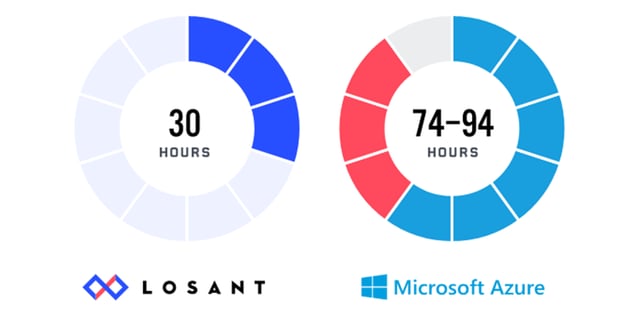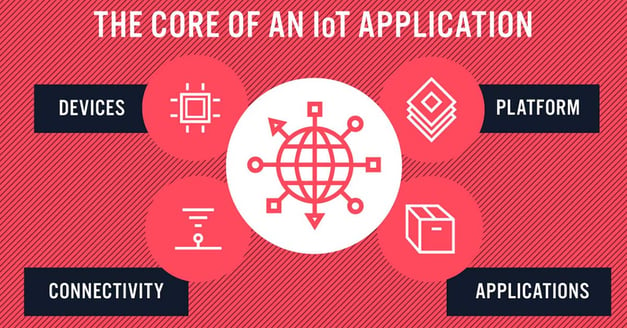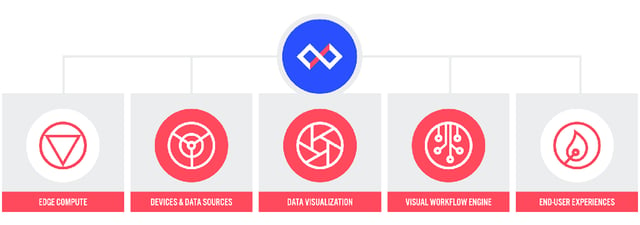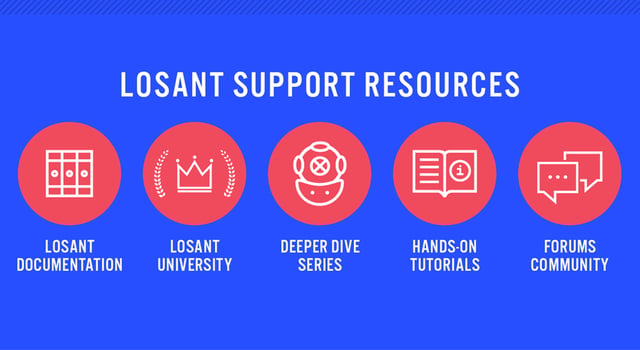The Internet of Things (IoT) is built on flexibility and functionality. There are so many different implementations of the technology, and so much inherent functionality, that it can be overwhelming to developers looking to get started. Complex platforms like Microsoft Azure and Amazon Web Services have a lot of functionality, but they suffer in usability because of it. Losant takes a different approach, offering an application enablement platform (AEP) that includes a low-code development environment, prioritizing ease-of-use when developing solutions.
Unlike a large cloud suite, the Losant Enterprise IoT Platform is an application enablement platform (AEP) that is designed to include everything you need for a successful IoT application, integrated in one spot, to ease the development process. In fact, MachNation performed an independent analysis of Losant and Microsoft Azure, and found that building an application in Losant took around 30 work hours, but they were unable to build the same application in Microsoft Azure after working for over 74 work hours.

Let’s take a look at the various components of the Losant Enterprise IoT Platform, and see how they work together to create a user-friendly IoT application-building experience.
The Core of an IoT Application

While every IoT application approaches its solution differently, there is a fundamental IoT architecture that is consistent across all types of IoT applications. It includes:
- Data Source: Physical hardware or digital components of your solution.
- Connectivity: Method by which devices send state data to and receive commands from a centralized IoT platform.
- Platform: Central data warehouse and orchestration engine for your solution.
- Applications: Method by which you or your customers engage with the data collected from your IoT devices.
The Losant Enterprise IoT Platform is built upon three integrated components that address these feature requirements. The components are:
- Visual Workflow Engine
- Data Visualization
- Devices and Data Sources
Those components are where you’ll spend the majority of your development time, but Losant includes two additional components that your team can use, should you need it:
- End-User Experiences
- Edge Compute

When your enterprise purchases a Losant license, all of these features are included. Your enterprise will not need to purchase individual components after the fact.
Visual Workflow Engine
The Visual Workflow Engine is a drag-and-drop workflow editor. It allows you to implement business logic and enable complex interactions between your devices and third-party systems. Workflows are the primary means to manipulate and process device data and to facilitate communication between devices and other services.
Data Visualization
Losant includes flexible dashboards to visualize complex device data aggregations across one or more devices. Each dashboard is composed of blocks, which are customizable visualizations of data. Using blocks, you can display all kinds of data, from GPS coordinates to graphs to device statuses. All blocks can be placed and manipulated on the dashboard through a drag-and-drop interface.
Devices and Data Sources
Device connectivity in Losant is enabled by open industry standards such as the MQTT protocol and REST APIs. You can organize your data and devices with Losant’s tagging and device modeling features. TLS protocols and fully revocable access keys provide security for each device. Losant is a hardware-agnostic platform, allowing just about any device that reports data to connect to the system.
End-User Experiences
In Losant, End-User Experiences are a means by which you can build a fully functional web interface that allows your users to interact with connected devices. You can build custom, branded user interfaces, multi-tenant applications, and APIs. Features include custom domains with full SSL support, secure user groups for authentication, and direct access to HTML, CSS, and JavaScript. All of this functionality can be added to your solution using just the Losant suite—you do not need any additional software or learn a new tool to provide this value.
Edge Compute
Losant’s Edge Compute functionality allows you deploy logic created using the Visual Workflow Engine to your edge devices and execute those workflows on the device itself. By using a gateway device, these devices can, when in range of the gateway, report their data to the cloud. Through edge computing, you have your devices make command decisions locally without a need to connect to the cloud, bringing IoT to even the most remote of locations.
Support Every Step of the Way
All of those components are included in your enterprise’s license, but you also gain access to numerous resources that can help you build your application. The highlights include:
- Losant Documentation: Extensive documentation on every feature of Losant, written by the engineers who built it.
- Losant University: A full series of Losant-specific tutorials, instructor-led videos, walkthroughs, and workshops to teach you the ins and outs.
- Deeper Dive Webinar Series: Ongoing series of live and on-demand webinars where Losant engineers explore features of the Losant platform, display real-world applications, and offer tips to help you bring together key Losant features.
- Hands-On Tutorials: Detailed tutorials that walk you through functionality and integrations.
- Forums Community: A growing community of Losant users and experts where questions can be answered and tips can be shared.

No matter where you are in your IoT journey, Losant has the tools to help. Ready to take Losant for a spin? Try it for free in the Losant Developer Sandbox and learn more about Losant in Losant University.
